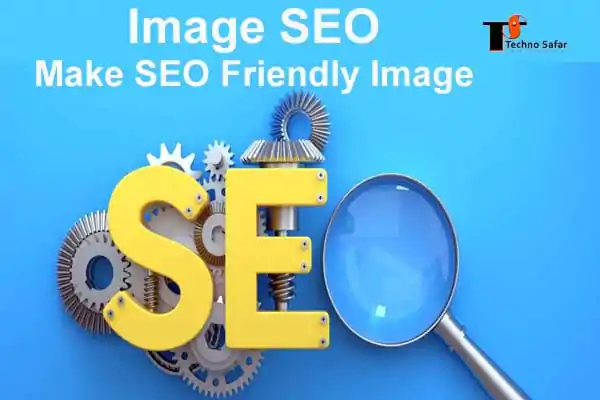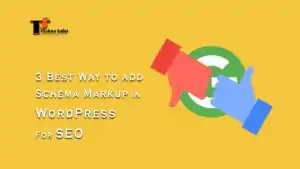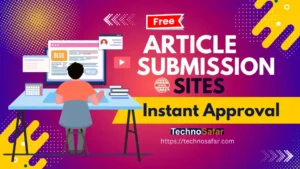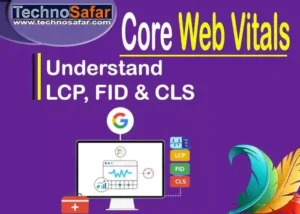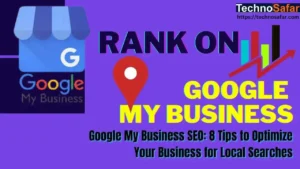Why Image SEO is Important and How to Do Image SEO?
How to do Image SEO? – When it comes to On-Page SEO of the article, then we all do SEO of our article very closely. But when it comes to Image SEO, hardly more people would pay attention to it. But along with writing SEO Friendly articles, you should also pay attention to Image SEO.
Image SEO is also a part of On-Page SEO, through which you can get the image of your blog ranked in the search engine and get Organic Traffic traffic.
Through today’s article, I will tell you how to do your Image SEO, and what are the benefits of doing Image SEO. So let’s start this article without losing time and know how to make the image SEO friendly.
*** What is Image SEO?
Whatever process is done to make the image used in the content of the blog or website search engine friendly is called Image SEO. Many internet users like to see images on the internet. By doing Image SEO, the images of the blog rank at the top in the Image Section of the search engine so that users can come to the blog through the image and traffic in the blog increases.
*** How to do Image SEO?
To make any image SEO Friendly, you should use the following 7 methods –
-
Change the name of the image
-
Choose the Right Image Size
-
-
Choose the Right Image Format
-
Use Alt Text in Images
-
Write title and description in image
-
Use copyright free image
Let us now understand in detail about these seven methods and know how to do Image SEO.

1. Change the name of the Image
Whenever you download any image for the content of your blog, the name of that image is something like this – ‘561779w99.jpg or 19554865.jepg’ etc. This name is not SEO Friendly at all, so change this name of the image and write it according to your focus keyword.
For example, if you are writing an article on How to do Image SEO, then you can write the name of the main image used in this article as How-to-do-Image-SEOI. Keep in mind whenever you are changing the name of your image, use the dash (-) sign between the two words.
Bad SEO Friendly Image Name – 561779w99.jpg
Good SEO Friendly Image Name – Image-SEO
2. Choose the right Image Size
Choosing the right size for the image is very important from the SEO point of view. Most new bloggers make a mistake here, whenever you download an image, its height and weight are very unlimited. That’s why you have to adjust the size of the image.
You can use 650X350 image size for a good SEO Friendly Image, this image size fits in every CMS. Whether your website is built on Blogger.com or WordPress, you can use this image size on both platforms.
I use Pixellab to create images for my blog, if you want you can also use it. With Pixellab, you can create a good image for your blog in a very short time.
3. Compress the size of the image
The third and most important step comes in reducing the size of the image. If the size of the image in your blog is more, then your website will take more time to load completely, and the ranking of your website will go down.
That’s why you always compress the image size. Due to this the speed of your website will not decrease. If your blog is on WordPress, then you can reduce the size of all the images of your blog in one click through SMUS, Imagify etc. plugins.
If your blog is built on Blogger, then you can reduce the image size using tools like Compress Jpeg, Optimizilla or Tinypng. These tools reduce the image size without degrading the quality of your image.
4. Choose the right Image Format
You should always use JPG or JPEG Image Format for the blog, the size of these Image Formats is also less and the quality is also correct. On the contrary, the size of PNG Image Format is more, which is not SEO Friendly at all. The use of PNG images spoils the loading speed of the website.
5. Use Alt Text (Alternative Text)
Alt text is most important in Image SEO. This is important from the point of view of both the search engine and the user. Let’s know how?
Whenever search engine crawlers crawl a webpage, they cannot easily recognize the image, in such a situation, they read the Alt text of the image, then understand what this image is about. And after understanding the image, they index the image.
If we talk from the user’s point of view, when the internet speed is low then the image is not able to load in the browser and Alt text is shown to the user instead of the image. So that the user can easily identify what this image is about.
Now you must have understood how important Image Alt text is. But even then many people do not understand its importance, either write anything Alt text which is not correct at all.
You should take care of some of the following things while writing Alt text.
-
Alt text describe your image well.
-
Use your focus keyword in Alt text.
-
Never use words like Pic of, image of, photo of in Alt text. Because Search Engine Bots understand that this is an image, we just have to tell them what the image is about.
-
The length of the Alt text of the image should not be more.
-
Keyword Stuffing should not be done while writing Alt text.
-
Do not use the same Alt Text in all the images of the blog.
-
Use different Alt Text according to the image.
Let’s learn to write Alt Text with an example, suppose you are writing Virat Kohli’s biography, then below we have told the right and wrong Alt text, you should always use Good Alt Text format.
Good Alt Text – ‘Virat Kohli Biography’
Bad Alt Text – ‘Image of Virat Kohli Biography’, Read the complete biography of Virat Kohli’
6. Write the title and description in the Image
The way you use title and description in a blog post, similarly, title and description have to be written in the image as well. You should write the title and description of the image in such a way that it describes both the image and the blog post. Also, use keywords in the title and description.
7. Use Copyright Free Image
You should always use copyright-free images in the blog. You can either create the image yourself or else there are many such websites in the internet from where you can download Copyright Free Image. Following are some websites to download copyright-free images –
-
pixabay
-
Unsplash
-
Pixel etc.
***Benefits of doing Image SEO
There are many benefits of SEO Friendly Image such as –
Increasing website speed – A Without SEO Friendly image greatly reduces the speed of the website, but by doing image SEO, you compress the image size so that the website takes less time to load.
Increasing traffic on the website – Most people also like to see images, if you have done Image SEO properly, then the images of your blog will rank on top in the image section in the search engine, so that the user can reach your website by clicking on the image. .
Can create Backlink – If anyone will use the image of your website in his website, then he will give the name and link of your website in the image credit, from which you will also get a Backlink.
Conclusion: Image SEO
Through this article, we have shared with you information about 7 ways to do Image SEO and some of its benefits. With the help of the tips I have told you to make the image SEO Friendly, you can create a good SEO Friendly Image and get good traffic in the website.
That’s all in this article, I hope you must have liked this article How to do Image SEO, if you have any questions related to this article or Blogging, then you can ask in the comment box.
Thanks for reading the article till the end.
You Can Read Also:
➡ Backlinks -15 Amazing ways to make High Quality


